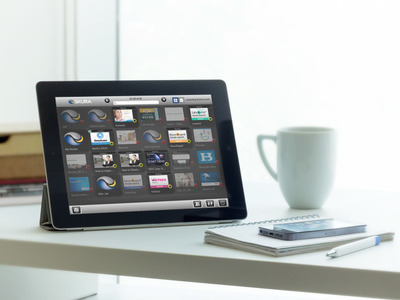Tablets and the technology behind them have taken the tech world by storm. Initially introduced to the market in 1987 by Linus, tablets became one of the most desireable technologies in 2010 when Apple introduced the iPad (Business Insider, 2013).
Today we analyze the application of tablet technology for enhanced marketing effectiveness in B2B sales.
First, if you aren’t up to date on your understanding of sales enablement, may I suggest reading this earlier post that explains What is Sales Enablement, and provides a Sales Enablement Definition for 2015. Click Here for more.
Known for their featherweight design, long lasting battery, and user friendly interface, tablets quickly became a hot tool for sales given that they help to simplify the business process and make life easier for marketers. Through mobile sales enablement applications, marketing teams can to distribute content more effectively, form stronger lines of communication, and have a deeper understanding of their customer.
New to mobile sales enablement? Check out our post about mobile sales enablement for a great introduction to the subject.
Content Distribution
Sales enablement solutions are simplifying the process of content sharing and dissemination. When using a mobile sales enablement platform, the marketing team has direct control over which material is to be used by sales reps.
Distribution controls can be set based on any defining variable (like geography, industry, etc.) because the marketing team may not want every sales rep to have access to all of the digital content that is uploaded. This in turn becomes easier for marketing as revisions are quicker and sales reps have the most up-to-date content.
As for sharing, mobile sales enablement makes it possible for sales reps to send content to any buyer via any medium, and the content can be viewed on any receiving device.

Stronger Communication
Sales reps are very often the connection between the brand and the buyer so building better lines of communication between them will ultimately help strengthen the relationship that you have with your customer.
Mobile sales enablement makes omni-channel engagement a reality and allows the sales rep to deliver a seamless buying experience to any buyer through any medium.
Don't forget though, good communication should begin internally. Stronger dialogue between sales and marketing help to facilitate department alignment. By uniting both sales and marketing, you can expect a clearer and more unified view of the customer, which in turn helps streamline goalsetting for more cohesive communications (Source: ClickerZ, 2015).
Of course, this doesn’t happen overnight, and sales enablement works around structural silos by capturing content behaviour data and influencing the marketing team through integration with the marketing automation system.
Interested in learning more about more about sales and marketing alignment? I suggest reading our post, “Why use sales and marketing alignment 5 best practices”, found here.
Stronger Understanding of Your Customer
One of the biggest advantages to mobile sales enablement is the integrated sales analytic software which unlocks real-time digital content consumption awareness from the end of the sales funnel – an area that marketing automation misses.
Through these analytic reports you can see things like how long your sales rep spent on a call, how long they spent consuming certain information, who was present at the presentation, the impact of those interactions, etc.
We all know the value of metrics: they allow companies to study buying patterns, better identify their customer, and even learn the practices of their best sales reps (Source: Hubspot, 2015). But more importantly, end-of-funnel metrics allow for optimization for the actual buyer, rather than just lead generation. This data in turn creates better quality leads and you will understand why buyers buy, rather than why they just become leads.
[RELATED CONTENT] Are you keen on the idea of mobile sales enablement and wondering whether to build it in-house or buy? We put together this report analyzing the risks/benefits of both. Download the free whitepaper to learn more.











